All 82 games have been played in the 2017-18 NHL regular season and 16 teams have been battling it out in the Stanley Cup Playoffs. On the flipside, there are 15 teams that fell short and are left to ponder on their disappointing season. Now, it’s disappointing whenever a team misses the playoffs, but these five teams had expectations that were higher than where they ended up, and they each disappointed their fan base in spectacular fashion as a result.
5. Dallas Stars
It’s been a frustrating road back to the playoffs for the Dallas Stars. After finishing as the top team in the Western Conference in 2015-16, they’ve yet again missed the playoffs. They have one of the best duos in the NHL with Jamie Benn and Tyler Seguin, but their abysmal goaltending kept them out of the playoffs.
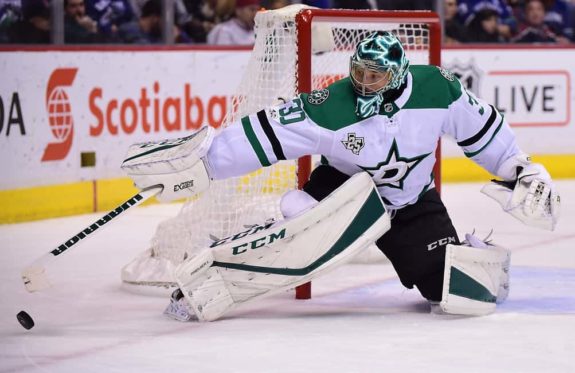
They had seemed to have solved their main issue in goal by signing Ben Bishop during the offseason, and he was a difference-maker for them this season. They also signed Alexander Radulov in the offseason, which only added to their tremendous offence. They seemed like a lock to make the playoffs.
That was until the end of March. Up until that point Dallas had been in a playoff spot all season and it seemed like a sure bet they would snag one of the wild-card spots. That was until the team fell apart at the finish line.
From Mar. 1 to the end of the season, Dallas had the third-fewest amount of points in the Western Conference with just 16 in 19 games and allowed the second-most goals against in the conference. A poorly timed losing skid means that Dallas has to once again hope for better 2018-19.
4. Montreal Canadiens
From the leading the Atlantic Division last season to being fourth-last in the NHL. It was a long fall from the top mostly due to extensive injuries to key players as well as not re-signing other important parts of the 2016-17 team.
The Montreal Canadiens didn’t do much to help their team during the offseason by not re-signing Radulov, who was second in team scoring, and Andrei Markov, who was still a cornerstone to their defence even at his old age. They then traded their top prospect in Mikhail Sergachev to the Tampa Bay Lightning for Jonathan Drouin, who they hoped would be a replacement for Radulov.
Montreal couldn’t fill the scoring void left by Radulov as Drouin finished with only 46 points in 77 games. Meanwhile, Sergachev had a fantastic season with Tampa Bay by putting up 40 points in 79 games as a rookie defenseman.
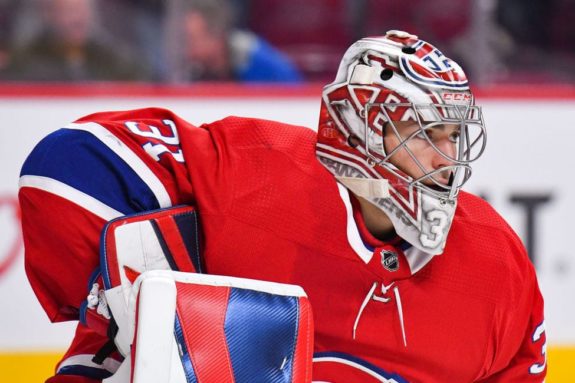
Montreal’s problems only worsed as Shea Weber missed all but 26 games with a foot injury while Max Pacioretty and Carey Price both missed significant portions of the season with injuries. Price wasn’t even able to prop the team up on his shoulders as he was never able to regain his elite form after returning from injury. In 49 games Price had an awful save percentage (SV%) of .900 and a goals-against average (GAA) of 3.11.
They weren’t expected to be as good as they were last season, but injuries and poor offseason decisions crippled a team that was hopeful that they could return to the playoffs.
3. Arizona Coyotes
Now the Arizona Coyotes may seem like an odd team to put on this list as they have been disappointing fans since they last made the playoffs six years ago – sorry ‘Yotes fans. But this offseason was finally different for the team. The Coyotes went out and got a top-six center in Derek Stepan, a starting goalie in Antti Raanta and a defensive-minded defenseman in Niklas Hjalmarsson to play with Oliver Ekman-Larsson.
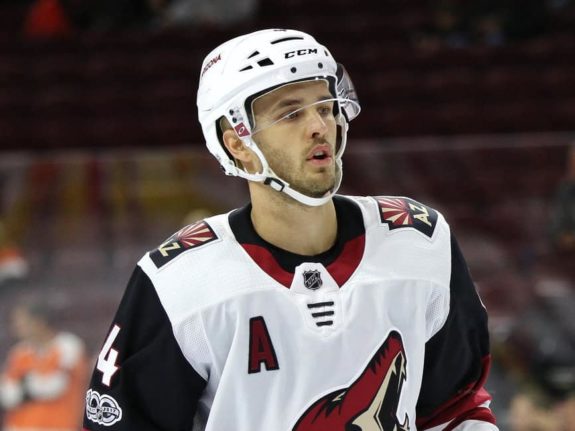
Along with a ton of young talent, the Coyotes finally looked ready to become a contender again. Unfortunately, they started the season going 0-10-1 through 11 games and lost Hjalmarsson and Raanta to injuries for half the season. The Coyotes finished third-last in the league, seemingly destined to once again finish in the basement of the NHL.
Surprisingly Arizona is the only team to finish their season with a positive outlook. In Arizona’s last 20 games from Mar. 1 to the end of the season, they had the fourth-most points in the Western Conference at 24 points in 20 games. Arizona may even have been able to get within reach of the playoffs if they had Raanta all season, as he finished with 21 wins in 47 games and a .930 SV%.
Hopefully, Arizona can have a better start and continue their great play into next season so that they can finally return to the postseason.
2. Edmonton Oilers
Going into the season, most people, with myself included, thought that the Edmonton Oilers would carve a path through the NHL on their way to the Stanley Cup. That prediction couldn’t have been further from reality as the Oilers finished with 78 points in 82 games and placed fourth-worst in the Western Conference.
Connor McDavid couldn’t even pull this team into the playoffs, even as he scored his way to his second-consecutive Art Ross Trophy. The Oilers problems came from three different issues. The first being that the team’s entire offence was left to McDavid and Leon Draisaitl with players like Ryan Strome and Milan Lucic greatly underperforming.
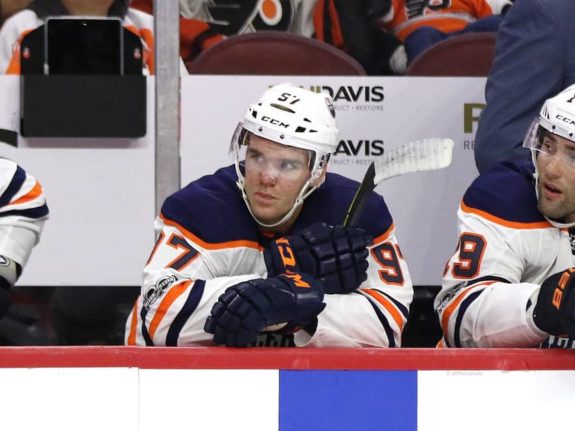
Their scoring comes almost exclusively from their centers or Draisaitl if he’s on McDavid’s wing. The loss of Taylor Hall and Jordan Eberle over the past two seasons have gutted their scoring and the pieces that general manager Peter Chiarelli got back in exchange have been disappointing.
It also didn’t help that Cam Talbot’s play wasn’t the same as last year when he helped cover up the team’s defensive deficiencies. Through 67 games Talbot had just 31 wins and a .908 SV% which was a huge step back from how he played in the 2016-17 season when he had 42 wins in 73 games and posted a .919 SV%.
Then there were the historically bad special teams. The effects of losing Eberle and the rest of the forward group underperforming, outside of McDavid, resulted in the Oilers having the worst power play percentage (PP%) in the NHL at 14.8 percent. Then there is the Oilers penalty kill.
The Oilers had the seventh-worst penalty kill percentage (PK%) in the league at 76.7 percent. It was only that high because they had the best road PK% at 86.7 percent, which makes it especially strange that there could be such a difference in their penalty kill from being on the road and being at home.
#Oilers currently own a 54.2% Penalty Kill at home.
The NHL record for single-season home futility on the PK is the 1977-78 capitals at 66.7%
— Sportsnet Stats (@SNstats) January 24, 2018
In January, the Oilers home PK% was 54.2 percent. That was the worst home PK% in NHL history since they started recording the stat with the 1977-78 Washington Capitals having held the worst percentage at 66.7 percent for 40 years. Luckily the Oilers were able to pull their home PK% up from that to end the season, but it still ended as the worst home PK% in league history at 65.8 percent.
The bright side for Oilers’ fans is that it would be improbable to think that their penalty kill at home would be as historically bad as it was this season for another year. Well, one would hope.
1. Ottawa Senators
And here we are at the Ottawa Senators. What a fall for a team that was literally a goal away from being in the Stanley Cup Final when they took the Pittsburgh Penguins to Game 7, but lost in double overtime.
Now many expected the team to regress a bit as they had been playing better than anyone could predict, but nobody thought they would be this bad and basically start a rebuild after going to the Eastern Conference Final.
The issues this season seemed to start with the Senators being unable to agree on an extension with Kyle Turris. Turris, who was one of the more beloved players in Ottawa because of both his on and off ice contributions to the city, was eventually traded to the Nashville Predators in a three-way trade with the Colorado Avalanche.
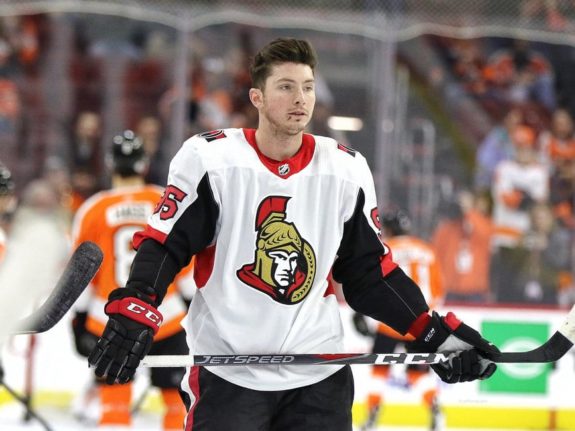
At the cost of giving up Turris, a first-round pick and other assets, the Senators acquired Matt Duchene. Unfortunately for everyone involved, Duchene had a horrible start to his time in Ottawa and the team’s record began to reflect that with the Senators dropping out of a playoff spot.
Duchene did eventually find his game and finished the season with 49 points in 68 games with the Senators, but it was too late for the team as they had already fallen into the basement of the league. It also didn’t help the team that Craig Anderson had an awful year with just 23 wins in 58 games and a .898 SV%.
Then by the trade deadline, the team began to unload contracts of players like Dion Phaneuf and Derek Brassard to clear as much money off their books as possible. At the same time, there was the possibility that Erik Karlsson might be traded as well. It came down to the wire with the Vegas Golden Knights rumoured to be one of the front-runners for a package that would’ve also required a team to take on Bobby Ryan’s contract to get Karlsson.
The deal never materialized, but expect things to heat up again during the offseason.
All of these problems and trades all make their way back to Senators owner Eugene Melnyk. From the Turris trade where he thought that the decision not to re-sign him came from Melnyk, to what seem to be cost-cutting trades that won’t help the team and further frustrating fans with the possibility that their star player may be traded.
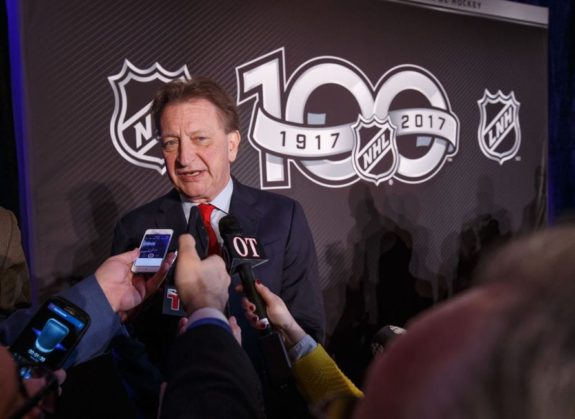
Melnyk has seemingly done everything in his power to upset the fans. At the NHL 100 Classic outdoor game, which was meant to be a celebration, Melnyk suggested that he may move the team if attendance doesn’t pick up. This resulted in the hashtag #MelnykOut campaign by fans who paid to have that displayed on a billboard.
There is plenty more that he’s done to anger fans and further aggravate the team’s attendance problem, but it’s obvious that he’s been the main source of the problems for the Senators this season. How they do next season will depend entirely on whether Karlsson is still with the team and if management can limit Melnyk’s meddling in the team.